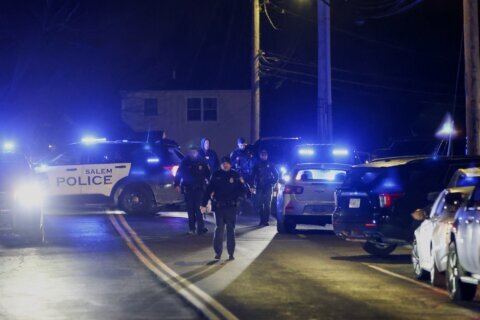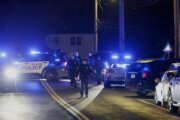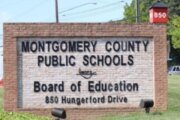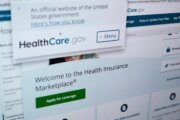In a city packed with lawmakers, diplomats, military leaders and other high-level government officials, it’s no mystery why private school is a popular option in Washington, D.C., even for families with young children.
There were 72 private schools in Washington serving almost 15,000 students in the 2019-20 school year, according to the National Center for Education Statistics. That’s up from the 2016-17 school year, when there were 58 schools and about 13,000 students.
“The environment in D.C. is selective but very prestigious and strong,” says Jason Patel, founder and CEO of Transizion, a Washington-based company that provides college counseling and career development. “D.C. does have an above-average private school system. There are many options. If you go to a city that is the size of D.C., but doesn’t have the same cultural impact, they’re not going to have the same ecosystem of private schools.”
As parents continue to reassess their education options amid a pandemic that has greatly disrupted schooling, experts say many families in Washington remain interested in private schools at all levels, including elementary school. Often, this is because they offer greater flexibility.
“Public schools have a bigger ship to steer,” says E.V. Downey, an educational consultant with more than two decades of experience with Washington schools. “If you have a school that’s 500-600 kids, that’s a very different thing to be able to shut down or have in person.”
Smaller Classes, More Programs
Though experts say the decision to choose public or private school is different for every child and family, they point to many reasons why parents in the district might explore private options for elementary school.
Some parents are looking for a better school than their neighborhood public option. Many are also drawn to smaller class sizes, more individualized instruction and additional programs in music, art, science and other disciplines.
[READ: Looking at Private Middle Schools in Washington, D.C.]
“The biggest thing about private school versus public school at that grade level is just that teachers are less stressed,” Downey says. “They’re just less overworked; they have smaller class sizes, fewer kids to deal with and fewer reporting requirements.”
Another attraction of private elementary schools is the idea — not always true — that it is the only way to gain access to better middle and high schools later on, according to Downey. “I feel like that is definitely something that is on people’s radar screens,” she says. “If you don’t go private for elementary, you’re kind of closing yourself out.”
Downey also says some students simply need the more nurturing environment offered at some private schools. “I always say, ‘try public school and see.’ But if you have a kid who just can’t get out in that bigger environment, just really needs that attention, that’s where private elementary school might just be what you need.”
Cost Can Be a Barrier
A major drawback to private schools, of course, is cost. The average tuition for private elementary schools nationwide, including less-expensive Catholic schools, is about $8,700 a year, or about $20,000 for non-sectarian schools, according to the Education Data Initiative. And in the district, like in other major cities, tuition can be significantly higher. For example, the annual elementary school tuition at Sidwell Friends, one of the best-known schools in Washington, is more than $45,000 a year according to the school.
While many schools offer financial aid, Downey notes that elementary school is a long commitment. However, she also says many families are willing to pay for peace of mind.
“At the elementary school level, there’s a feeling that you’re doing the absolute best that you can,” she says. “I definitely know families who … say, ‘I can pay — why wouldn’t I just do the best thing I can for my child?'”
While some parents are looking for an edge when their children apply to college years later, admissions experts say private elementary schools don’t always convey that type of advantage, at least not directly. Drusilla Blackman, a former dean of undergraduate admissions at Columbia University who now works as an education consultant, says colleges focus on high school.
“It’s really looking at [grades] nine through 12 and what a student has done over that period,” she says. “That is what gives you the sense of whether they are mature enough and thoughtful enough … to manage at your school.”
[READ: How to Get Private School Financial Aid.]
Private Elementary Schools in Washington, D.C.
For parents interested in exploring private elementary schools in Washington, here’s a sample of what’s available:
— Acton Academy of Washington D.C. is a Montessori-inspired school serving grades PK-8 in Washington’s historic Foggy Bottom neighborhood, near Georgetown. The school’s location is a renovated row house on K Street.
— Beauvoir, The National Cathedral Elementary School serves about 365 students in grades PK-3 with a focus on early-childhood education. The student-to-teacher ratio is 6-to-1. Among Beauvoir’s offerings are a library with 17,000 titles for young readers; a program that teaches Spanish in all grades; and an average of 50 after-school enrichment classes every semester.
— Capitol Hill Day School is a school blocks from the Capitol building that serves grades PK-8. With about 225 students, it has a student-to-teacher ratio of 7-to-1. Grades contain 16 to 24 students, with two teachers per class in grades PK-4.
— Georgetown Day School is a PK-12 school founded in 1945 as the first integrated school in Washington, D.C. It serves roughly 1,000 students, 40% of whom are students of color.
— The Lab School of Washington is a PK-12 lab school affiliated with American University. It serves students with learning differences, with a focus on hands-on and arts-centered learning.
— Maret School is a K-12 college-prep school serving roughly 650 students. It features a 6-to-1 student-to-teacher ratio and an average class size of 16. The school is more than 100 years old.
— Milton Gottesman Jewish Day School of the Nation’s Capital is the only Jewish day school in Washington serving grades PK-8. “We dive into Jewish life — from a spirited early-morning ‘tefilah‘ experience to the foundational texts of the Jewish people,” the school says on its website, adding that “we immerse students in Hebrew conversation, songs, poems and Israeli literature.”
— The River School serves about 220 students in grades PK-4, with a student-to-teacher ratio of 5-to-1. Between 10% and 15% of students have some hearing loss and the school offers support teams in audiology, occupational therapy and other disciplines.
— Sidwell Friends School is a Quaker school serving about 1,100 students in grades PK-12, with campuses in Washington, D.C. and Bethesda, Maryland. The school is almost 140 years old. Among its many famous alumni are the children of several U.S. presidents, including Tricia Nixon, Chelsea Clinton and Malia and Sasha Obama.
— Sheridan School is a progressive school serving about 225 students in grades K-8, with a student-to-teacher ratio of 6-to-1. Located in the district, the school also has a 130-acre campus in the Shenandoah Mountains for outdoor learning and exploration. Students begin visiting the “mountain campus” in kindergarten.
Searching for a school? Explore our K-12 directory.
More from U.S. News
How to Get Private School Financial Aid
Navigating Private School Interview Questions
Is a ‘Lab School’ Right for Your Child?
Evaluating Private Elementary Schools in Washington, D.C. originally appeared on usnews.com






